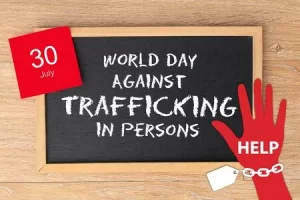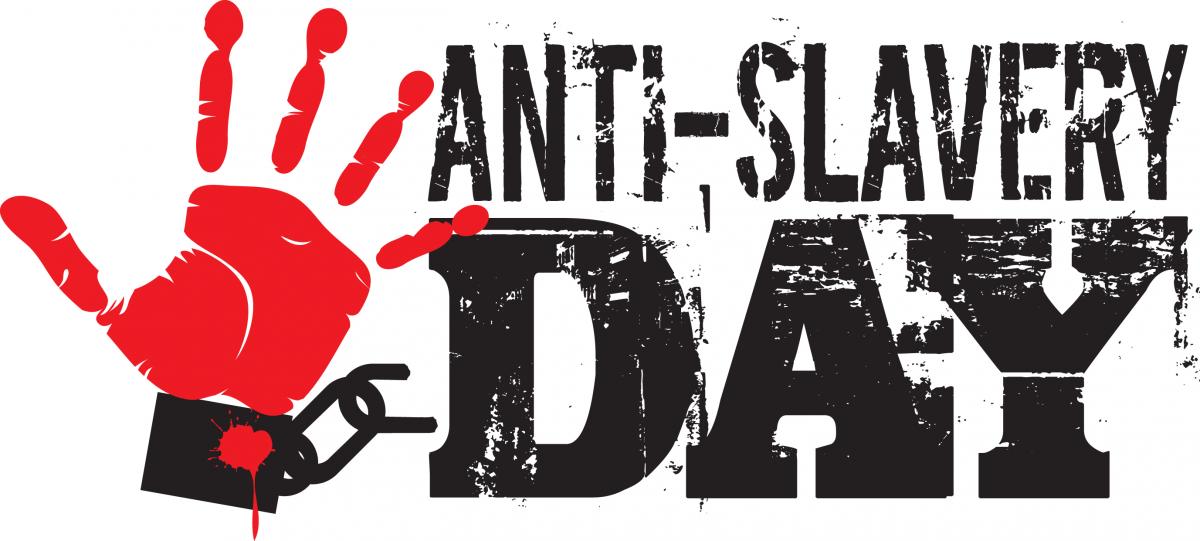« I greet the young people of many countries who have come for the World Day for Prayer and Awareness against Human Trafficking, which will be celebrated on 8 February, memorial of Saint Josephine Bakhita, the Sudanese religious sister who was enslaved as a child. Today too, many brothers and sisters are deceived with false promises and are then subjected to exploitation and abuse. Let us all join to counter the dramatic global phenomenon of human trafficking. » Pope Francis – Angelus – Feb 4, 2024
X° International Day of Prayer and Awareness Against Human Trafficking 2024
“Be confident of this, that the One Who began a good work in you will carry it on
to completion until the day of Christ Jesus.” (Phil. 1:6)
Inspired by the commitment of young people from all over the world, the theme of the 10th Edition International Day of Prayer and Awareness Against
 Human Trafficking 2024
Human Trafficking 2024
JOURNEYING IN DIGNITY: LISTEN, DREAM, ACT
The International Day of Prayer and Awareness Against Human Trafficking (IDPAAHT) is celebrated annually on the Feast of Saint Josephine Bakhita on 8 February, since formally observed in 2015.
The primary objective of this Day is to create a greater awareness of the phenomenon of human trafficking and to reflect on the situation of violence and injustice that affects so many people’s lives. Another goal is to attempt to provide solutions to counter human trafficking by taking concrete actions.
The theme of the 10th Edition of the Day continued on from 2023 (Journeying in Dignity), chosen by an international group of young people involved in the fight against trafficking. This year, the subtitle LISTEN, DREAM, ACT is added to materialize the “Call to Action” commitment made by the international representatives of young people gathered in Rome in February 2023.
The 10th Edition has the following objectives:
– To pray together as brothers and sisters of all ages, cultures, and faiths to end human trafficking and other forms of exploitation;
– Raising awareness about human trafficking at all levels – local churches, traditions, and communities;
– Celebrating the 10th year anniversary of the Day with partners and people of goodwill;
– Closing the year dedicated to young people (2023-2024).
 “Journeying in dignity” is the theme of the 9th Edition of the International Day of Prayer and Awareness Against Human Trafficking, celebrated around Feb. 8, 2023.
“Journeying in dignity” is the theme of the 9th Edition of the International Day of Prayer and Awareness Against Human Trafficking, celebrated around Feb. 8, 2023.
 THEME 2022: “Use and abuse of technology”
THEME 2022: “Use and abuse of technology” 
 Every year the world continues to get more and more crowded. While we’ve a tendency to pack ourselves into massive cities, and there are presently still long open stretches of countryside, every year that gets whittled away at more and more. The power and food needs of the world continue to place a greater and greater strain on our ability to meet them, and resources in general are becoming harder and harder to come by. World Population Day comes along each year to remind us that our present rate of population growth is unsustainable, and the present social and logistical issues we are experiencing to meet the demand of that population will only get worse if we don’t do something.
Every year the world continues to get more and more crowded. While we’ve a tendency to pack ourselves into massive cities, and there are presently still long open stretches of countryside, every year that gets whittled away at more and more. The power and food needs of the world continue to place a greater and greater strain on our ability to meet them, and resources in general are becoming harder and harder to come by. World Population Day comes along each year to remind us that our present rate of population growth is unsustainable, and the present social and logistical issues we are experiencing to meet the demand of that population will only get worse if we don’t do something. « Endemic sexual violence including rape, abduction, human trafficking, sexual slavery and forced marriage contributes to the disproportionate suffering of women and girls in conflict. » — UN Secretary-General, António Guterres
« Endemic sexual violence including rape, abduction, human trafficking, sexual slavery and forced marriage contributes to the disproportionate suffering of women and girls in conflict. » — UN Secretary-General, António Guterres